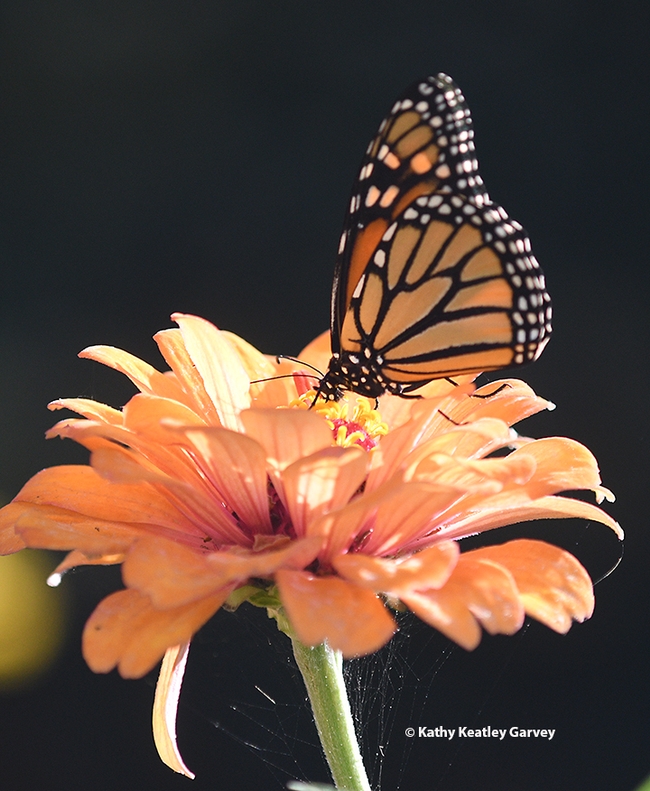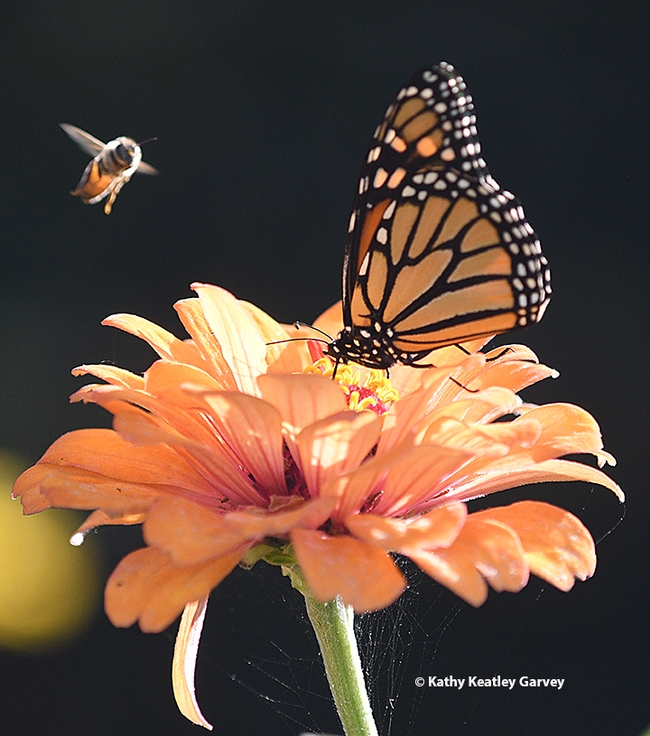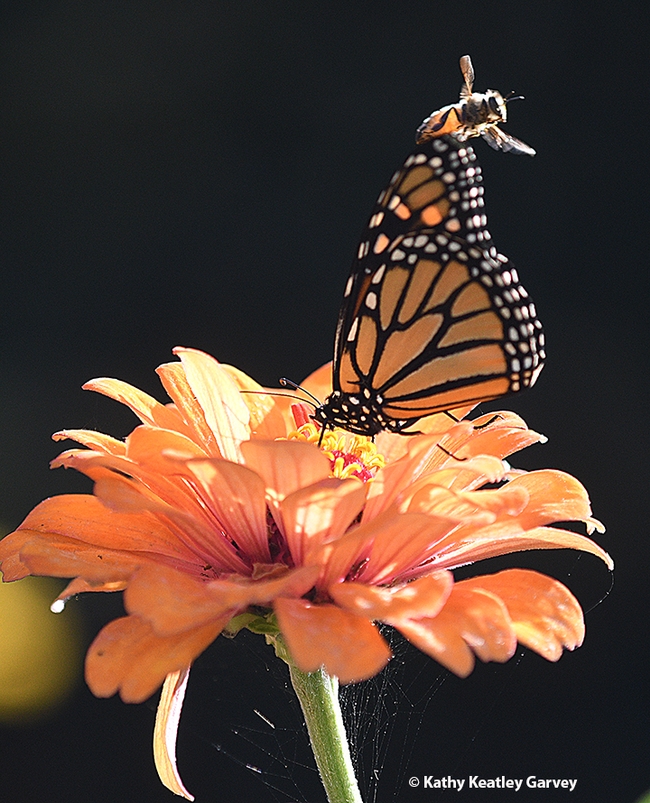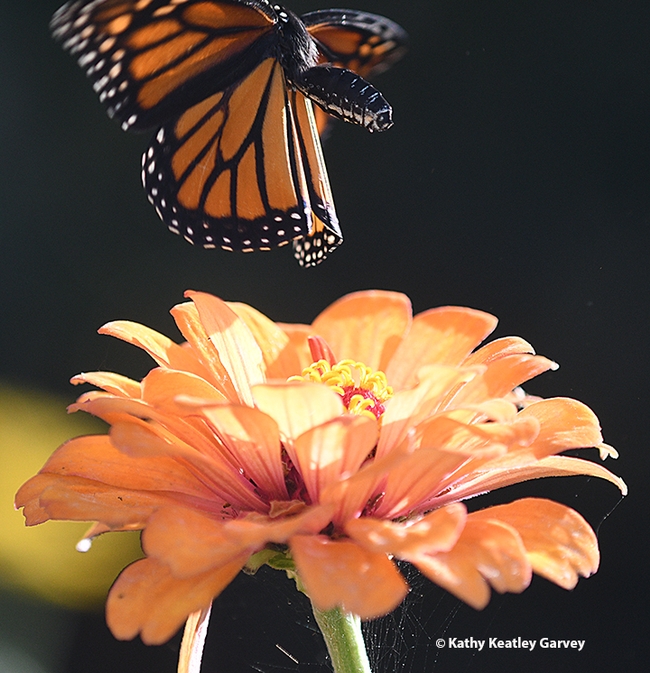The monarch migration is well underway. The iconic butterflies fluttering into California from the Pacific Northwest engage in "nectar stops" to fuel their flight to their overwintering sites along coastal California.
They are not the only ones seeking nectar.
Monarch: "Sweet! Look what I found! Nectar! Did someone plant this patch of zinnias just for me?"
Honey Bee: (Buzzing in) "Share, Monarch! I need some of that nectar to take home to my colony. Winter's coming and my queen and my sisters need more nectar to tide us over until spring."
Monarch: "Sorry, Bee. I'm on a tight flight schedule and you can always get your nectar tomorrow."
Honey Bee: "Maybe if I buzz your wings, you'll leave!"
Monarch: (Wings up) "I can take the hint, but I'll be back!"
"The annual migration of North America's monarch butterfly is a unique and amazing phenomenon. The monarch is the only butterfly known to make a two-way migration as birds do. Unlike other butterflies that can overwinter as larvae, pupae, or even as adults in some species, monarchs cannot survive the cold winters of northern climates. Using environmental cues, the monarchs know when it is time to travel south for the winter. Monarchs use a combination of air currents and thermals to travel long distances. Some fly as far as 3,000 miles to reach their winter home!...Monarchs living west of the Rocky Mountain range in North America overwinter in California along the Pacific coast near Santa Cruz and San Diego...Monarchs roost in eucalyptus, Monterey pines, and Monterey cypresses in California."--U.S. Forest Service
"A three-week count in November and December 2022, conducted over 272 sites in coastal California by the Portland-based Xerces Society for Invertebrate Conservation, tallied 335,479 of the orange-and-black iconic butterflies, an increase of 36% over the 247,237 counted the previous year. More importantly, the rebounding species (Danaus plexippus) hit an all-time low of 2,000 in 2020, leaving biologists concerned it would disappear from North America."--Los Angeles Daily News.
Attached Images:

A migrating monarch butterfly finds nectar in a zinnia in a Vacaville pollinator garden. (Photo by Kathy Keatley Garvey)

A honey bee wants nectar, too. (Photo by Kathy Keatley Garvey)

The honey bee buzzes the wings of the monarch hoping it will leave. (Photo by Kathy Keatley Garvey)

The monarch takes the hint. A bee wants that nectar. (Photo by Kathy Keatley Garvey)